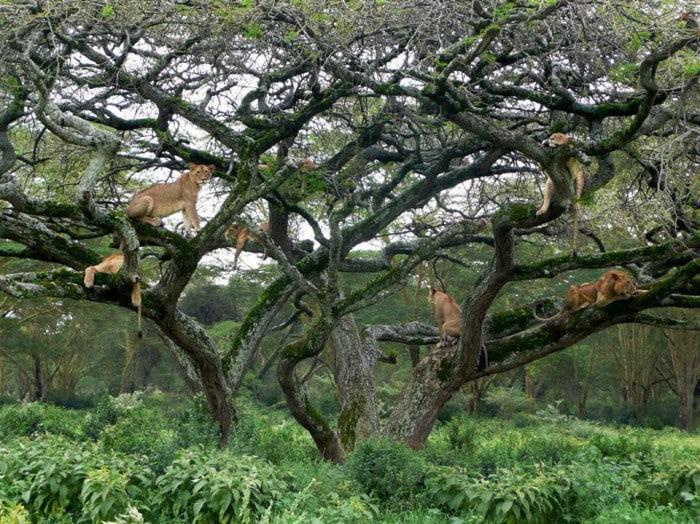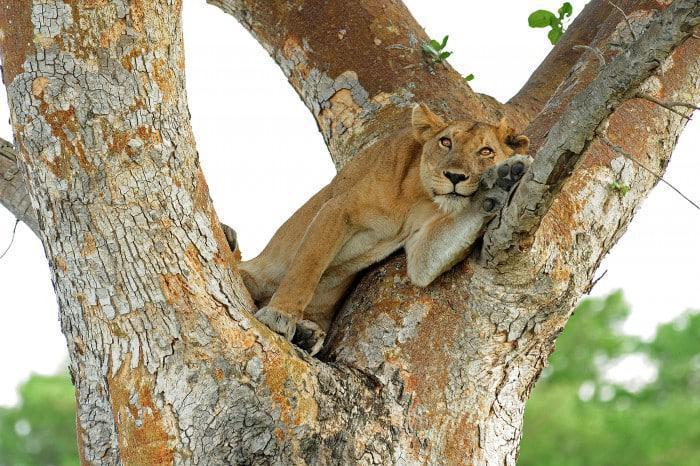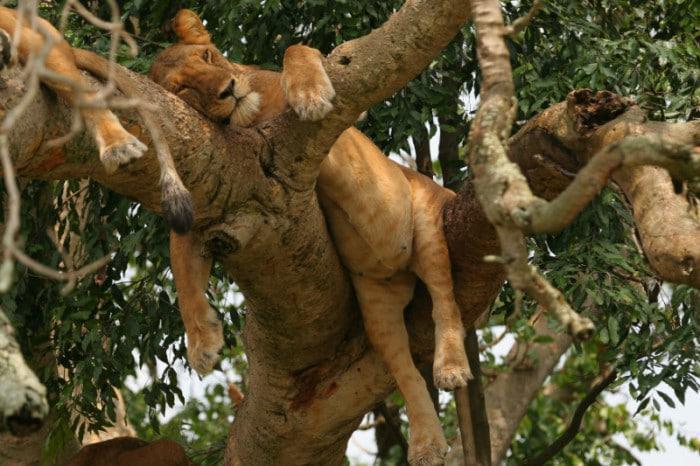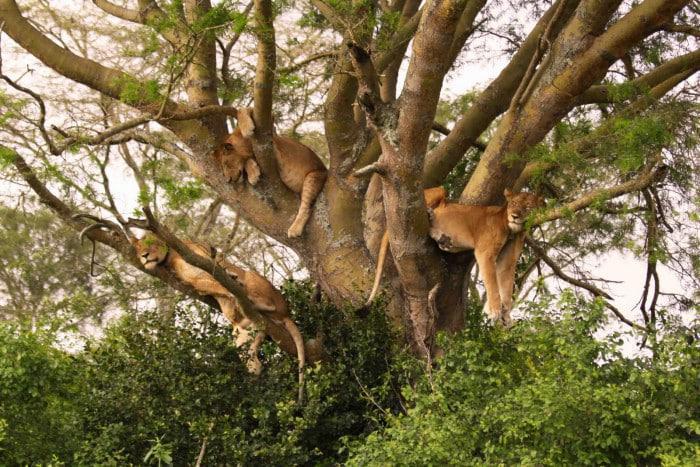If you’ve ever had the privilege of seeing a lion close-up in the African bush, you will know just how incredibly regal and majestic these animals really are. But seeing a whole pride suspended high in the branches of a tree? Now that’s an entirely different story, and one you would not readily expect to see since these, the biggest of the African cats, are not known for their tree climbing ability. As it seems that this phenomenon appears to be becoming less unusual (there have been several reports and sightings from various game reserves), we thought we’d nose around the web and find out where and why lions like to climb trees.
In the past, only Lake Manyara National Park was known for its tree climbing lions. But nowadays it is becoming more common with Tanzania’s Serengeti National Park, South Africa’s Kruger National Park, and Uganda’s Queen Elizabeth National Park all reporting sightings.

The questions is; are all lions capable of this behavior or is it pride specific, and is this behavior innate or learned? For young cubs (as with all cats) playing is inborn and helps them with coordination, teaching them social skills and strengthening their muscles. While hunting is part of their instinctive behavior, stalking techniques are learned from the parents. Young lions will observe their elders climbing trees and imitate their behavior, thus keeping this habit firmly entrenched in the pride.
Some maintain that lions climb trees to survey their surroundings for a potential meal or to catch a cooling breeze and escape the heat on the ground. Others speculate that they are trying to avoid irritating biting insects on the ground.

Whatever the reason, watching these majestic animals try to clamber clumsily up trees underscores the fact that they aren’t natural tree climbers like their cousins, the leopard, who are considered Africa’s number one tree-climbing big cats.
These are the most likely places that you’ll be able to experience this unusual and fascinating natural phenomena.
Queen Elizabeth National Park, Uganda
One of the most renowned pride of tree climbing lions can be found within the Ishasha sector in the southern part of Uganda’s Queen Elizabeth National Park. The park is famous for these lions, with many visitors traveling many kilometers in search of the chance of seeing this phenomenon. They can often be seen lazily lying high up in branches of huge fig trees in perfect view of the Uganda Kobs (a type of antelope) that graze below on Ishasha’s open plains and savannah.

Lake Manyara, Tanzania
Situated in northern Tanzania, Lake Manyara National Park is well-known for spotting tree-climbing lions, as well as for its incredible scenery and wildlife, flamingoes, and soda-ash lake. The lions here can often be seen relaxing in acacia trees, and have become quite adept at tree climbing. Watching these big cats (they can easily weigh 250 to 400 pounds) maneuver themselves up into the branches of a tree is quite a sight!

Kruger National Park and Sabi Sand, South Africa
This interesting behavior has recently also been observed near the Kruger National Park’s Crocodile Bridge Camp where there is a particular pride that is known to climb. Neels van Wyk (one of Crocodile Bridge’s rangers) reckons that he has come across various lion prides that have learned specific unique skills from an early age. One such example are lions who have learned to pair up with a partner to attack porcupines (one from the front, the other from the back) to dodge their stinging quills.
And then there is the fascinating saga (all caught on video) of lions at Londolozi climbing a tree to steal a leopard’s kill…with entertaining consequences!
Personally I think that lions must have been climbing trees for various reasons forever and day, it’s just that with more people out in the bush and on the savannah with cameras and the technology with which to share them easily, we are naturally seeing more tree climbing lions!



